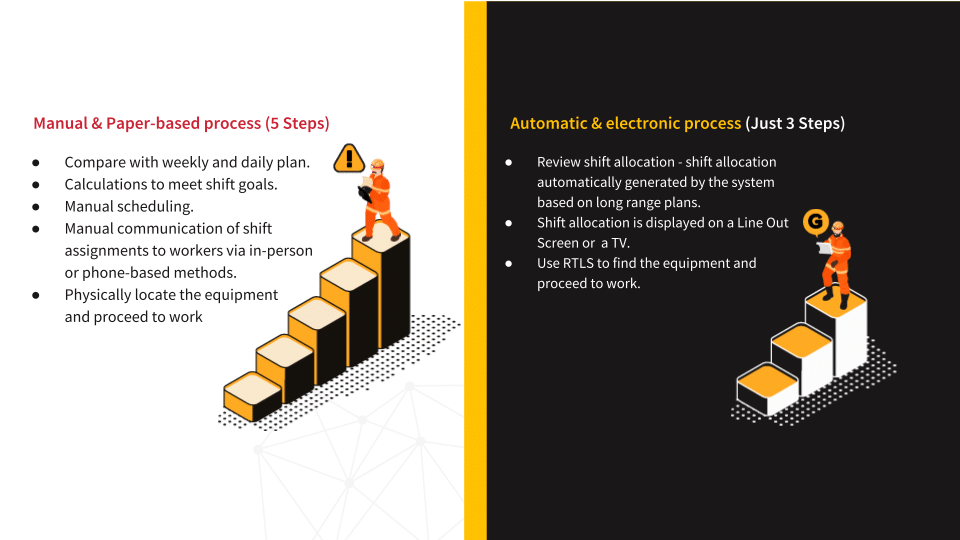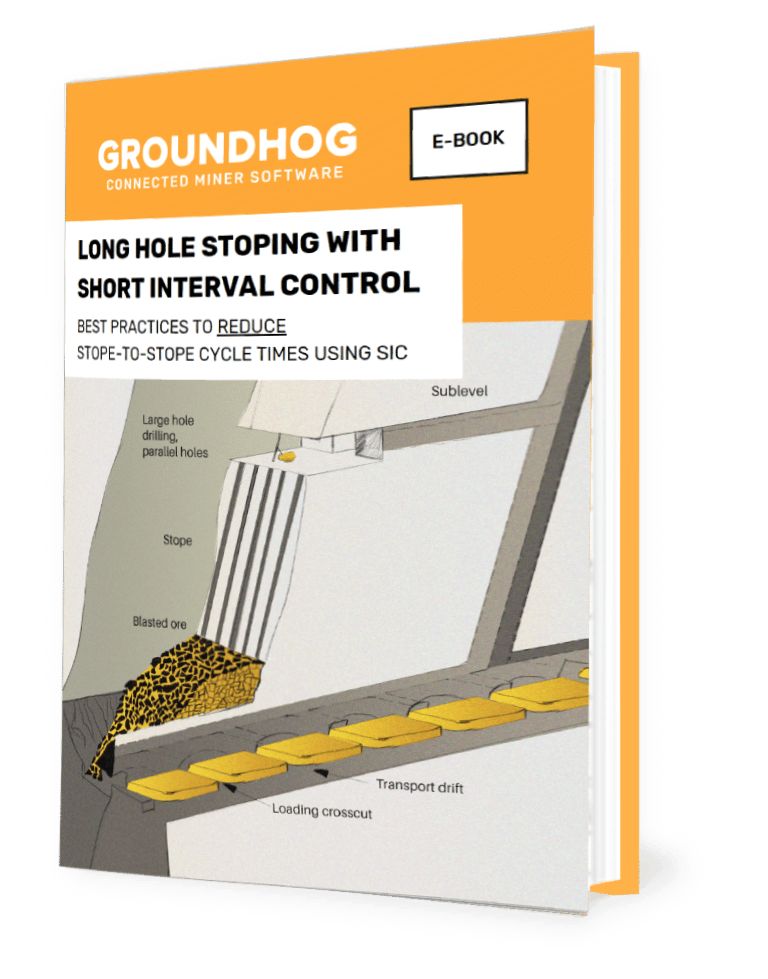This week we’re discussing the benefits to Shift Allocation as we continue to contrast Manual vs. Digital in our Mine Digitization and Automation series, making the case that a move from paper-based to digital benefits everyone.
Planning for a shift starts well before the crews come in to work. Long-range production goals, monthly targets, and weekly plans all set the pace, and provide benchmarks that must be observed and compared with reality. In other words, planned vs actual.
It is possible to plan with a manual system, but the best laid plans WILL go awry, because this is mining, after all. The list is long – machinery goes down, ground conditions change, unplanned maintenance occurs; the point is that you need to be able to react to changes without throwing out the entire plan.
Experience dictates that if the weekly plan starts Friday, by Monday, there’s a good chance it will already require adjustment. The unexpected will occur, but the plan underpins everything, and the goal is to have as little variation as possible, and minimal stand-by time. This requires accurate tracking of data and information, and communication about status in as close to real time as possible.

Shift Allocation – Manual
Consider the daily morning meeting with a manual system. Planners, Mine Managers, Superintendents, various supervisors, and the day’s oncoming shift boss all come together to discuss what is going to happen in the next 24 hours. Progress on the weekly plan is compared with the previous shifts. Targets vs actuals are calculated. Some – or many – manual adjustments to the plan are made.
We’ve all seen what comes next. The changes cause a cascading effect on every department. Coming in, everybody has an idea of what they need to do, but how well communicated that has been to other departments is often questionable. Adjusting to changes in the plan can become a heated discussion as competing priorities are pitted against one another, and multiple ideas about how best to react are put on the table.
In a mine with good leadership and a strong team culture, decisions will be made with accountability attached, and the day’s work will proceed with new shift assignments communicated to crews in lineups. With luck, required equipment will be where it should be, but unfortunately, this isn’t always the case. The worst-case scenario is the confusion above ground translates to inertia and standby underground.
Shift Allocation – Digital
With a digital process, shift allocation is automatically generated by the system based on long range plans. The allocation of tasks for the week is reviewed and adjusted to reflect reality by the Planning and Ops teams. If issues come up, adjustments can be made. Unplanned tasks can be pulled in if work in another area is paused due to equipment or maintenance issues. If tasks are not completed, this information is available to everyone based on planned vs actual data that can be displayed in real time.
In a fully integrated system, all departments know what the others are doing. Preventative and/or scheduled maintenance is reflected in the plan. Mobile maintenance and production know what machines are up or down, and why, and can allocate tasks accordingly. Rather than discussion and debate, data informed decisions drive adjustments that present as little variability to the plan as possible, making it easier to get back on track. Inputs from all departments are visible to every one else.
Now, you have reduced the time spent scheduling tasks, mitigated potential over-correction by being able to take a step back and get a big picture view when issues do come up, and achieved alignment between departments through a powerful and effective communications tool.
When it is time to line out the crew, their planned tasks have already been sorted, equipment and personnel allocated, and with a Real Time Locating System – highly recommended for many reasons – they know exactly where the equipment required to do their work will be. (In large and busy mines, it is possible to lose equipment – in one notable incident, an expensive piece of equipment was badly damaged by a blast in an adjacent drift because it had been parked and the operator neglected to tell anyone the location. A costly and eye-opening mistake!)
Ultimately, planned work is safer work. It just makes good sense to invest in tools that save time and confusion and increase active shift length.
Next week in our Mine Digitization and Automation series we will continue this discussion by looking at data collection, and how there really is NO comparison between manual and digital when it comes to leveraging data to make informed decisions.



